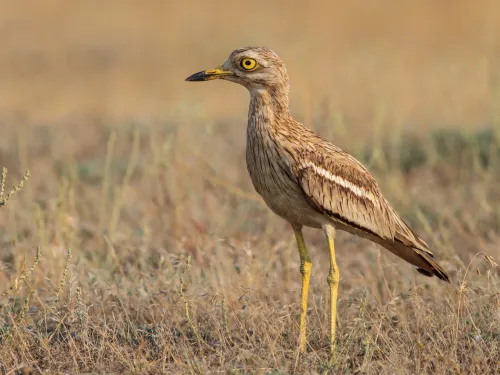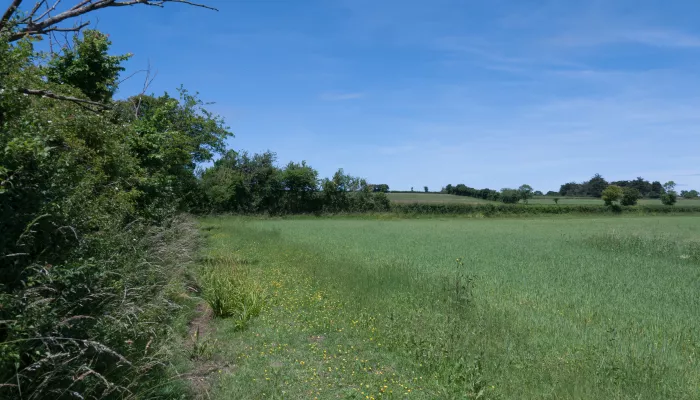
Stone curlew
Stone curlews are unusual waders with large yellow eyes - perfect for hunting beetles at night.

Most arable fields are large, featureless monocultures devoid of wildlife, but here and there are smaller fields and tucked away corners that are farmed less intensively, or are managed specifically with wildlife in mind.
Arable land is cultivated to provide annual crops such as wheat, sugar beet, potatoes and beans. Under traditional agricultural management, arable fields supported a wide range of ‘arable weeds’ such as poppies, fluellens, corn marigold, and corncockle. Many of the plants we now cherish are ancient introductions that arrived with seed when agricultural culture spread across Europe and into Britain, some potentially as far back as the Neolithic age.
Changing practices and intensification of farming mean that few fields outside of nature reserves support farmland birds and plants in the high numbers they used to. Invertebrates dependent on disturbed ground are found in arable fields, but are susceptible to agro-chemicals, and areas with seeds left behind after harvest can support seed-eating birds.
Regularly disturbed, arable land supports species able to exploit the short-term, open conditions created by periodic ploughing and harvesting. Many of the plants are annual and able to flower and produce seed in a matter of weeks, the seeds lying dormant in the seed bank until conditions are suitable for germination. Some of these plants were once so common that they were considered to be pests, but now most are quite rare, some teetering on the brink of extinction. For example, the endangered corncockle has suffered from efficient seed-cleaning of crop seed before they have time to set seed.
Arable fields are abundant in the UK, particularly in the south and east of England, though those supporting a significant arable flora or farmland bird population are rare. Remaining hotspots include the chalk of south-east England and places such as the Hebrides where agriculture is less intensive.
Arable birds are declining, but look out for skylark, lapwing, corn bunting and yellowhammer. In particular areas or at known sites, you may see stone curlew, cirl bunting and Montagu’s harrier. In spring, while the vegetation is low, look out for brown hare loping across fields or ‘boxing’. Another mammal associated with this habitat is the harvest mouse, the UK’s smallest rodent.
Fields of poppies are easy to see from a distance; closer inspection is needed to find some of the less rare arable plants, including sharp-leaved and round-leaved fluellen, dwarf spurge, small toadflax, corn spurrey and field madder. Rarer species such as shepherd’s-needle, pheasant’s eye, and purple viper’s-bugloss are more easily seen on reserves.
In general, arable wildlife has suffered badly from pesticides and fertilisers, a move to autumn-sown cereals, and the loss of unkempt field corners and mixed arable and livestock farms. In the past, farms produced wildlife in abundance, as a by-product of farming operations, making farmland one of the most biodiverse habitats. The economic pressures encouraging the intensification of agriculture over the last 60 years have largely pushed out arable weeds, birds and other wildlife, and with the range of chemicals now available, farmers have the ability to remove almost all wild animals and plants.
Wildlife flower margins and set-aside land have allowed wildlife to persist where landowners have chosen to make space for them, generally with financial encouragement through agri-environment schemes. Measures such as ‘beetle banks’, ‘skylark plots’ and unsprayed conservation headlands have delayed the declines a little, but haven't been enough to reverse the trends, and the challenge of creating space for arable wildlife on land owned by a diversity of commercial farmers remains.